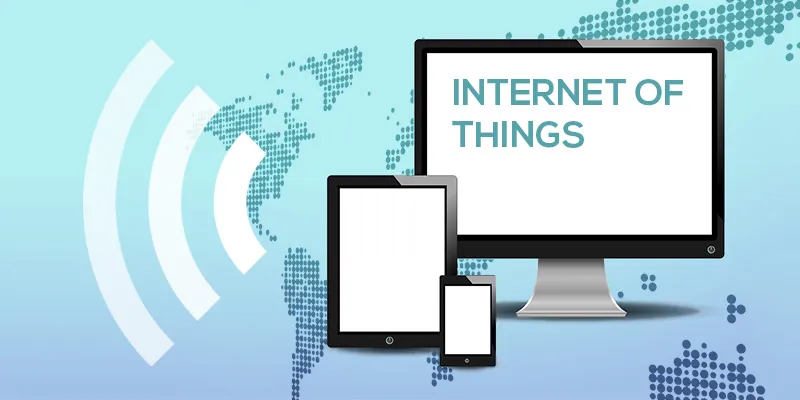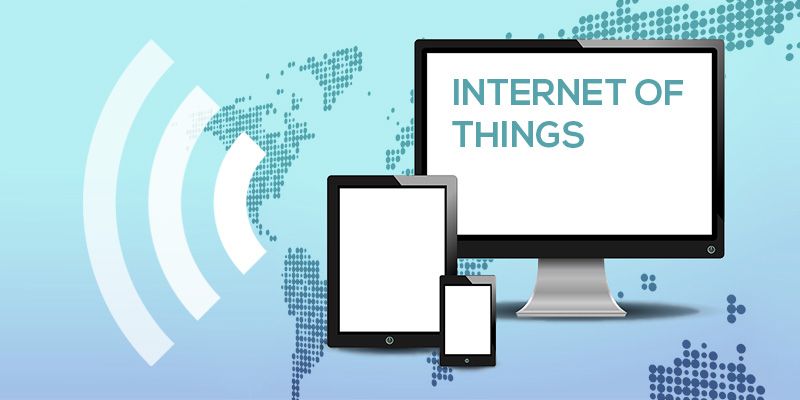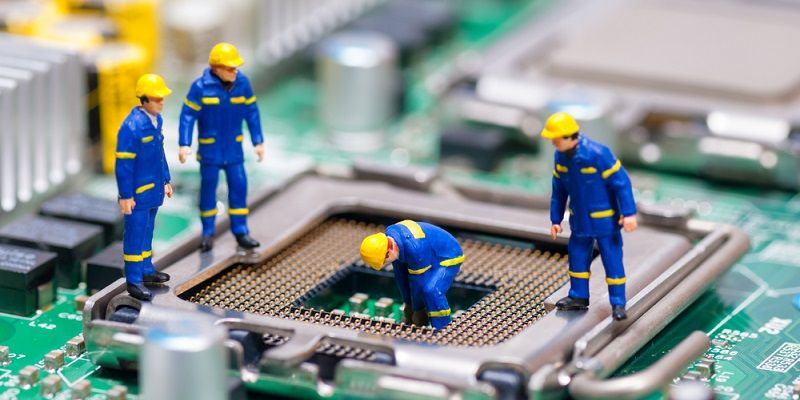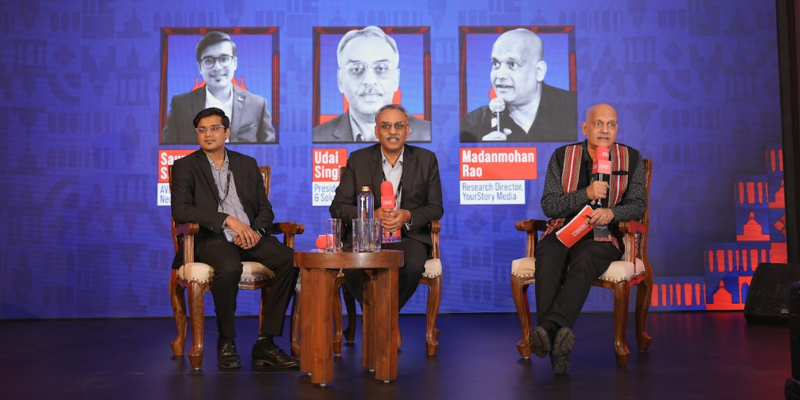Internet of Things (IoT): how to tap the $12 billion market in India
The age of connected devices with ubiquitous sensors and mobile networks has been coming upon us for years now, in its earlier phases of smart machines and M2M (machine to machine connectivity) -- and now the Internet of Things (IoT). Other related terms used by industry giants are Internet of Everything (IoE) by Cisco, Industrial Internet by GE, and Smart Planet by IBM.

A range of models are being proposed here to transform the way we live, work and play – sensors talking to one another, to consumers or to organisational managers; data hosted by the sensor, user device or technology provider’s central servers; intelligence in the hub, network or sensors; on-grid and off-grid sensors; and so on.Frost & Sullivan forecasts 80 billion connected devices in year 2020, and investors and tech giants are ramping up in IoT space. Cisco’s venture capital arm, Cisco Investments, is reportedly increasing its investment in IoT startups to the tune of US$150 million globally over the next two years; it projects that the IoE industry can be a US$14.4 trillion market by 2022. Cisco has already invested in IoT accelerators and startups such as Alchemist Accelerator, AylaNetworks and Evrythng.
Can the proliferation of low cost and low power devices plugged into wireless networks also transform emerging economies like India? A range of industry stakeholders and startups gathered to discuss these opportunities at the inaugural panel of the IoT Special Interest Group (SIG), hosted by the Bangalore chapter of The Indus Entrepreneurs.
According to Machina Research data cited at the TiE panel, the global market for IoT in 2020 will be worth $373 billion in revenue, with $194 billion from hardware and $179 billion from software. India will account for $10-12 billion of this total revenue – but this figure can be much higher if proactive steps are taken right now. Here are some of my key takeaways from the TiE panel about these opportunities and challenges for IoT in India.
Sectors and impact areas
A number of IoT impact areas and sectors have already been identified and many will apply to India, such as transport, wellness, healthcare, buildings, home, factories, agriculture, livestock, electric grids, water supply networks, and of course individual consumers. Portals for managing this information and operating services will be run by individuals, organisations and industry. Overall, IoT is a hardware, software and telecom play, collectively bringing about improved productivity, risk management, realtime decision making and new waves of innovation.
Mapping the India landscape
In addition to the usual suspects above, unique needs of the Indian environment will have to be factored in, such as extreme temperatures, high levels of humidity and dust, erratic power supply and spotty telecom coverage. The solutions lie not just in technology or business but also culture – wireless surveillance devices can easily be sabotaged and tampered with by disgruntled employees!
Insights from early stage startups
A number of early stage IoT startups have already taken off in India – and not just in the usual large cities but also smaller ones such as Belgaum, home to SenseGiz.com. The startup has a range of tags and sensors which can be clipped or strapped on to the body; some monitor sleep indicators, track athletic activity, detect accidents, and provide panic buttons. Others help consumers tag items so they can be easily found, thus saving search time. The tags are priced between Rs 1,500 and Rs 6,000 and already have paying customers and distributors in the US, Japan and Thailand. Other startups like Bangalore’s GetActive are also in the device space for monitoring personal health indicators.
Insights from mature startups
Some startups in this space were founded 7-10 years ago during the M2M era, with RFID tags as popular applications. ConnectM was founded in Bangalore in 2007, with funding from Sasken and IDG Ventures. Its solutions have been used in monitoring bank ATM networks (particularly relevant given the spate of recent robberies), and asset management in mobile operators’ telecom networks. India has an estimated 350,000 mobile telecom towers, as compared to 475,000 in China, 70,000 in Africa and 75,000 in Europe. Each tower costs about Rs 50 lakhs, with electronics accounting for Rs 30 lakhs. IoT solutions help in efficient utilisation of resources like diesel, and track pilferage and theft. The telecom sector is the second biggest user of diesel in India, after the railways and before defense.
Industry-academia partnerships on India-specific IoT
The Robert Bosch Centre for Cyber Physical Systems (RBCCPS) at the Indian Institute of Science is advocating a more human-centred view of IoT, which has people’s ownership of their data at the centre and does not require lock in to vendors such as Cisco, Microsoft or Google. It advocates models which also use ‘little data,’ such as health indicators of individuals, which are stored and controlled on their own devices also and not just central data servers. Its projects include Bluetooth sensors to track hand hygiene habits of medical staff in St John’s Hospital in Bangalore, sensor networks to help irrigation efficiency for Indian farmers, and motion tracking in post-operative therapy for Narayana Hrudayalaya patients.
Identifying the larger pain points
Though the ESDM (Electronics System Design and Manufacturing) sector is projected to cross $400 billion in 2020, 65% of India’s hardware is imported, at a cost estimated as the same size of India’s petroleum imports – an alarming prospect indeed for government and industry. It is embarrassing that for a supposed IT superpower, many of India’s hardware components in the burgeoning cellphone assembly industry are imported from China, and that tests of locally developed hardware components often have to be done in the US, Europe or China. If IoT has to take off as an entire sector, India needs to get its hardware act together.
Industry associations and government will create an electronics manufacturing cluster (EMC)
To stem some of the above shortcomings, the government of India and the India Electronics and Semiconductor Association have teamed to set up the first brownfield EMC at Bangalore for $13 million. The approval for the second brownfield EMC at Mysore for $5 million is also expected shortly, with both clusters to be operational by the end of next year. This will help setting up of semiconductor fabrication units, testing facilities, prototyping labs and 3D printers – all of which can help hardware startups move faster in the IoT space.
National policy will develop and promote local hardware
India’s National Policy on Electronics (NPE) aims at investing about US$ 100 billion in the electronics industry by 2020, and providing employment to around 28 million people by 2020. This includes achieving a turnover of US$ 55 billion of chip design and embedded software, US$ 80 billion of exports in the sector, and over 200 EMCs by 2020. The policy also aims to upscale high-end human resource creation of PhDs in this sector, according to government sources. India and South Korea, which is ranked No.2 after the US in IoT leadership, have signed agreements to cooperate on IoT. All this sounds great in theory, but the real test will come in speedy implementations and clearances, which hopefully will happen under India’s new government.
Industry networks are connecting entrepreneurs
The Bangalore chapter of The Indus Entrepreneurs has created a Special Interest Group on IoT to exchange ideas, organise field trips, host online forums and promote entrepreneurial action on IoT activity in India. Investors, mentors, technology providers, testers, lab heads and even lawyers have signed up already. Focus areas include IoT stacks, sensor manufacturing, connectivity models, analytics, IP models and specific vertical sectors.
In sum, concerted momentum is accelerating in India in the IoT sector. A range of business models are emerging (such as CapEx-OpEx mix for industry solutions), along with scalability solutions for hardware products, and global and local applications of IoT platforms. Startups are already showing the way for innovators, and large industry players and academic institutes are teaming up. With the next link coming from government, IoT may well be poised as a powerful growth sector and driver in India.
Speaker profiles:
Venkatesh Kumaran is VP, Strategy & Operations at the India Electronics and Semiconductor Association (IESA). He is working to grow the ESDM (Electronics System Design and Manufacturing) industry in India, executing on the National Electronics Policy. He is actively working to develop Greenfield and Brownfield Electronic manufacturing clusters (EMC). Venki earlier spearheaded Intel’s software subsidiary Wind River as Country Manager, and was also with Motorola, OnMobile in HongKong and Tata Elxsi in Boston.
Sriram Chidambaram is CEO of ConnectM Technology Solutions. He was earlier at Philips Electronics, Cadence Design Systems and Parametric Technology Corporation. He has an engineering degree from Birla Institute of Technology and Science, Pilani, and a management degree from Indian Institute of Management, Bangalore.
Dr. Jay Warrior is Chief Technologist at the Robert Bosch Centre for Cyber Physical Systems at the Indian Institute of Science, Bangalore. He was earlier with Agilent Technologies, Hewlett-Packard, Fisher-Rosemount and Honeywell in the US and Asia. His external roles include the advisory board for Coactive Networks, an Internet based startup in energy management. He currently has 22 patents in networking and diagnostics technology.
Ravi Chivukula is Vice President and Global Practice Head for Enterprise Mobility at Tech Mahindra. He has led innovation, engineering and monetization in software and systems in diverse areas. His interests span ruggedised mobile devices, app stores, VoIP, life sciences and manufacturing.
Arvind Tiwary is Founder of SangEnnovate, and organiser of the TiE Special Interest Group on IoT India. He has industry experience of 27 years as product manager, enterprise application architect, sales and marketing. Arvind is an alumnus of the Wharton Business School, Indian Institute of Technology, Kanpur and Indian Institute of Management, Ahmadabad.











